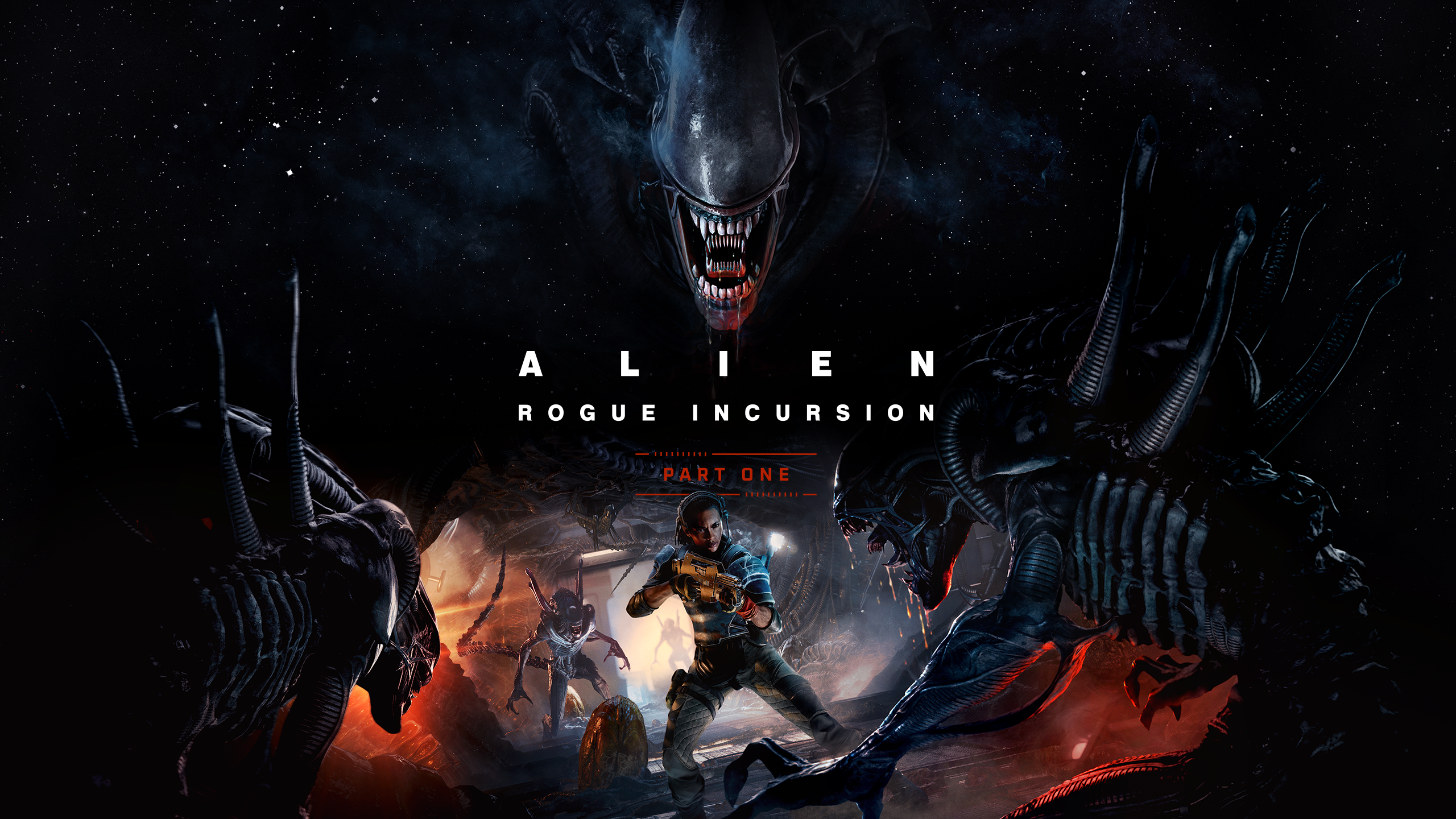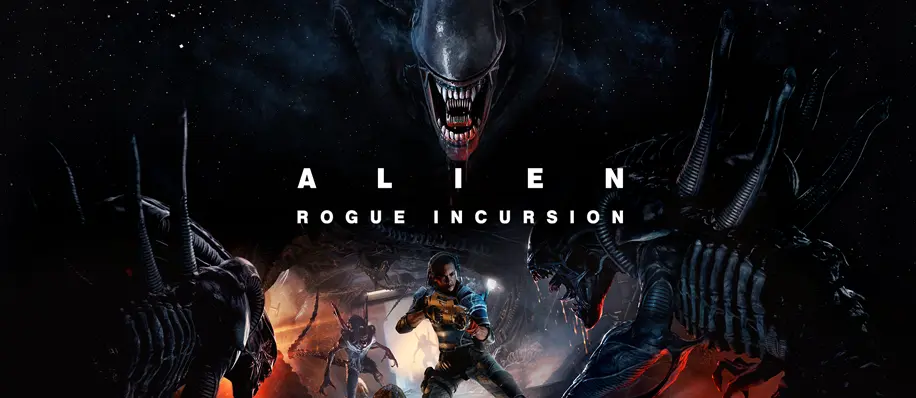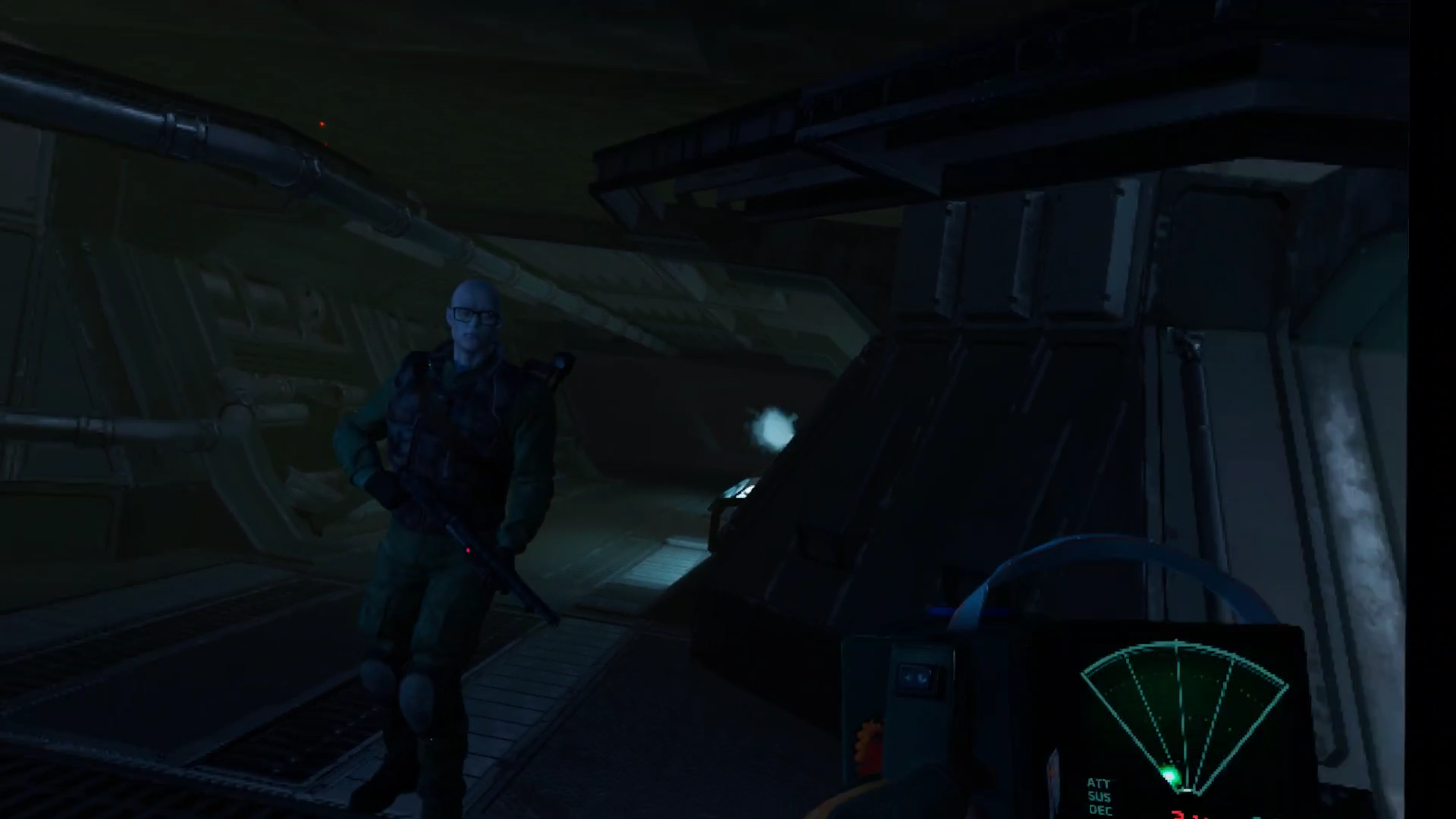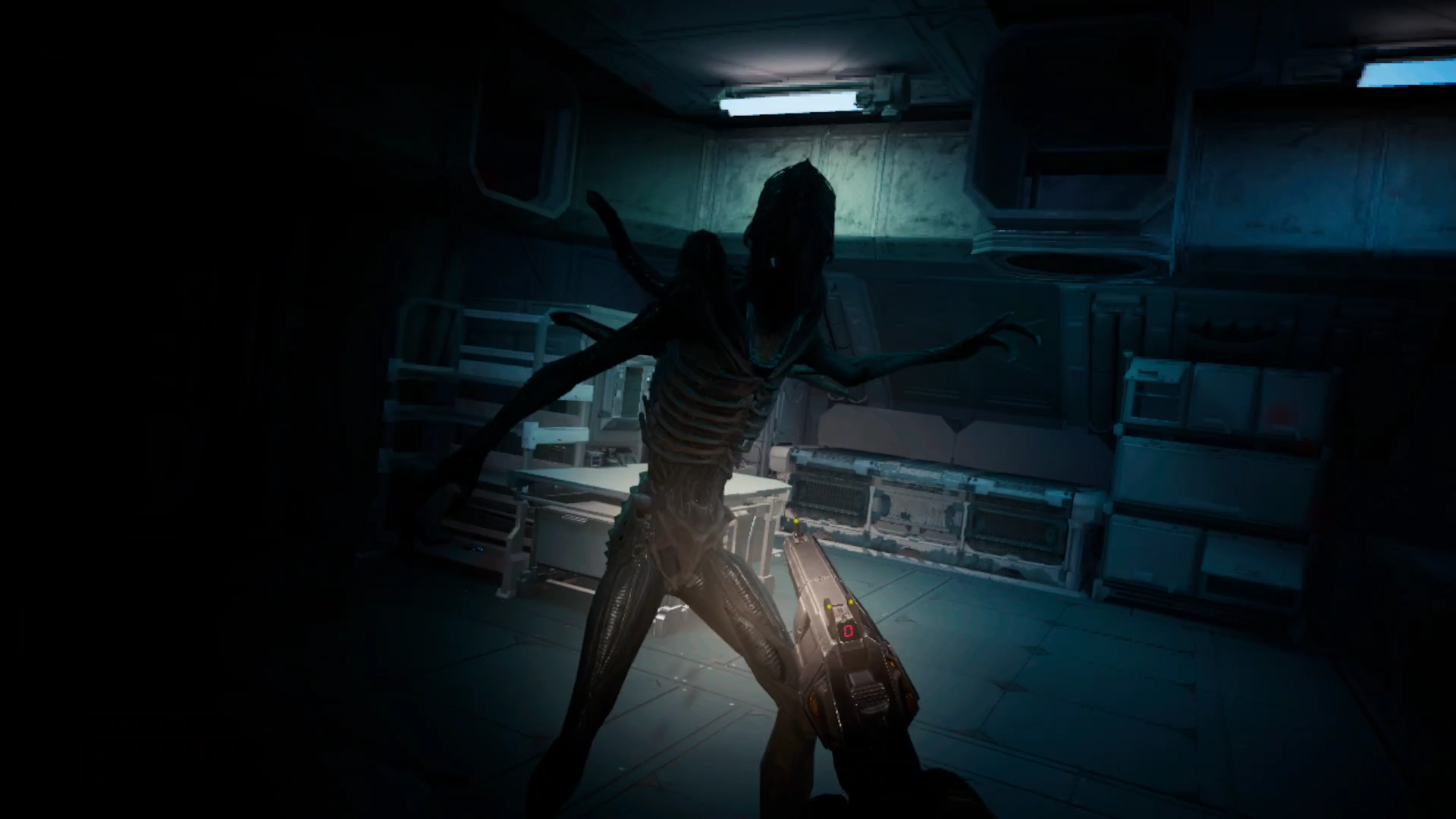
Listen to The VRverse Podcast


Review: Alien: Rogue Incursion
- February 19, 2025
- 8:59 pm
- Standalone
Alien: Rogue Incursion was a game I was eagerly anticipating in December, and I had the chance to try it out on both PSVR2 and PCVR before its official launch. Unfortunately, my experience was somewhat mixed, and I felt a bit let down by what it provided. While they did address some of my concerns in a patch, I chose not to dive back in just yet, opting to wait for the Meta Quest version set to release in 2025. Now that I’ve played this version, were my initial issues have been fixed?

Release Date: February 13th 2025
Developer: Survios
Publisher: Survios
Price: £30.99
Reviewed On: Meta Quest 3
* Access Provided For Review *
The Perilous Truth
You step into the shoes of Zula Hendricks, a former Colonial Marine determined to unveil the dark secrets of Weyland-Yutani’s covert experiments. Her journey takes a perilous turn as she investigates an SOS signal from the remote planet Purdan, which once housed a now-abandoned mining colony. Accompanied by her loyal synth companion, Davis 01, Zula must navigate the treacherous Gemini Exoplanet Solutions research facility, teeming with dangers, and find a way to survive.
Not Quite The Horror Experience
It’s important to note that if you’re seeking a horror experience similar to Isolation with Rogue Incursion, you might be disappointed. Given Surios’s background, the game leans more towards an arcade style, which aligns with their VR arcade experience.
One of my main concerns with the original release was the spawn rate of the Xenomorphs. They appeared so frequently that they lost their impact, and by the end, I found myself rushing from one point to another instead of taking the time to eliminate them. Fortunately, one of the improvements made since then is the spawn rate, which really enhanced my experience. II didn’t find their attacks bothersome during my playthrough on the Meta Quest build. However, I still didn’t find much use for the motion detector, as it starts beeping even when it’s on your arm. So, once it begins to beep, I just keep an eye out for any movement.
With that in mind, as you get closer to the base, you’ll initially experience a sense of tension and suspense, especially with the motion detector in hand, anxiously anticipating any approaching movements. While the team has made strides in reducing the spawn rate, I find the Alien AI lacking once they leave the walls and ceilings. This is unfortunate, as it can feel a bit straightforward—unless you’re tackling the game on the hardest difficulty. To truly immerse yourself in the Alien experience and feel the Xenomorphs as a genuine threat, you’ll need to play on the most challenging setting.
In addition to the Xenomorphs, you’ll come across Facehuggers, but they appear quite rarely throughout the roughly seven-hour campaign. It seems like the team could have done more with the Facehuggers, as they only show up at specific moments. If they had been utilised more effectively throughout the ship, it would have significantly heightened the tension, leaving you uncertain about what the motion detector was detecting.
To take on the Xenomorphs and Facehuggers, you have three weapons at your disposal: a revolver, a pulse rifle, and a shotgun. Personally, I found myself favoring the pulse rifle when I had all three weapons, only switching to the others when I ran low on ammo for it, which didn’t happen too often. You also receive some proximity grenades that can be handy at certain points in the game, but I didn’t find myself using them very frequently. Regarding health, you can carry a limited number of medical syringes for when you get hurt. These are easy to find in lockers, cupboards, or cases scattered throughout the Gemini Exoplanet Solutions research facility, so you’ll rarely be in a situation where you don’t have at least one in your inventory.
You will also have an Insulated Clamp outside of the shooting, which helps you reroute circuit boards to open doors, activate terminals, or cut power to certain devices. Your Datapad will display all your objectives, the layout of the research facility, allow you to play audio logs you discover, and connect to terminals for reading messages or performing necessary actions like unlocking doors or cycling power. Additionally, you have your PDT card, which will need new access profiles added as you explore the facility to ensure you can reach all the areas you need.
This setup means you’ll find yourself doing quite a bit of backtracking throughout the facility, whether it’s to gather items from different sections, obtain higher access levels, or use specific terminals. I noticed towards the end of the game that the reliance on backtracking felt excessive, almost as if it was included just to prolong the gameplay, which became a bit frustrating. Throughout the facility, you’ll find numerous Safe Rooms that allow you to save your progress.. I’m grateful for their abundance since the game lacks an auto-save feature, and I highly recommend saving whenever you come across one. I experienced a frustrating moment when I died after a long stretch without saving, having to redo a significant amount of progress.
Lacking That Alien Atmosphere
What really captivated me about the original was the stunning visuals and how they blended with the sound to create that quintessential Alien vibe. I was a bit nervous about how the standalone device would manage this, knowing it would likely require some visual compromises. Sadly, the adjustments made in this area took away my favorite aspect of the game: the atmosphere. The dark, misty corridors of Weyland-Yutani are gone, and the lighting fails to create the same level of tension that comes from exploring the ship. I found myself only needing to use my shoulder-mounted torch about three times throughout the entire campaign, whereas it was crucial in the PSVR2/PCVR versions. It’s disappointing because this really diminishes the essence that the franchise is celebrated for. I’m not sure if it’s just my perspective from having played the other versions, but as a fan of the Alien films, I feel it lacks the atmospheric depth that the movies provide.
There’s also a peculiar decision to give everything a strange gleam or shine, which feels out of place. As you navigate through the station, which is in poor condition, the surfaces appear almost new or polished, diminishing the overall sense of desolation. Additionally, there are noticeable issues with the geometry, particularly with the lift doors that you end up staring at for a while during the game, which detracts from the immersion.
The facility is vibrantly animated by its environmental sounds, creating a sense of isolation as you navigate the ship, even though the visual downgrade diminishes some of that experience. The scuttling noises of the Xenomorphs, whether they’re above, beside, or emanating from an open vent, are expertly captured in the 3D audio. Coupled with the outstanding voice acting from Zula, Davis 01, and the voice notes, you remain fully engaged during the dialogue segments. This ensures that your immersion in the game is never broken. At one point, a particular vocal effect sent chills down my spine, but I won’t spoil the surprise for you.
Comfort
| Posture | Supported |
|---|---|
| Standing mode | Yes |
| Seated Mode | Yes |
| Artificial Crouch | Yes |
| Real Crouch | Yes |
| Movement | Supported |
| Smooth Locomotion | Yes |
| - Adjustable Speed | No |
| Teleport | No |
| Blinders/Vignette | Yes |
| - Adjustable Strength | Yes |
| Head-based | Yes |
| Controller-based | Yes |
| Dominant Hand Switcher | Yes |
| Turning | Supported |
| Smooth Turning | Yes |
| - Adjustable Speed | Yes |
| Snap Turning | Yes |
| - Adjustable increments | Yes |
| Input | Supported |
| Tracked Controllers | Yes |
| Hand Tracking | No |
| Gamepad | No |
The Verdict

Alien: Rogue Incursion takes the Alien franchise into virtual reality, opting for a more arcade-style experience rather than the horror vibe many fans anticipated. The latest patch has addressed some of the issues present on release on other platforms, particularly the spawn rate of the Xenomorphs, which is a significant improvement as it prevents them from becoming overly repetitive or losing their impact. However, it’s disappointing that the AI for their attacks hasn’t seen much enhancement, making them a real threat only on the highest difficulty setting. Additionally, the visual downgrade has significantly impacted this version, stripping away much of the tension and atmosphere that the visuals typically provide. I’m not sure if this perception stems from my experiences on PSVR2 and PCVR, but it certainly feels different. It’s unfortunate that the atmosphere has diminished so much, as the Quest version plays and performs quite well, but as a devoted fan of the franchise, I found it challenging to engage without that signature Alien ambiance.

